Conus marmoreus Linnaeus, 1758
Marble cone, 108mm
Conus
marmoreus is a common species in the Marshalls, where it lives only in
the lagoon, either along interisland reefs or on lagoon pinnacles. They usually
are seen at depths of 3 to 14m. In some areas, they are usually found buried
in sand under rocks by day, emerging at night to feed. They seem more common
exposed both day and night in and around dense patches of Halimeda
algae. Although sometimes reported to eat exclusively other cone shells, we
also find them eating other groups including augers (Terebridae), turbans (Turbinidae),
and cowries (Cypraeidae). Immediately below, a buried Conus marmoreus
emerges from the sand; possibly it detected some potential prey going by.
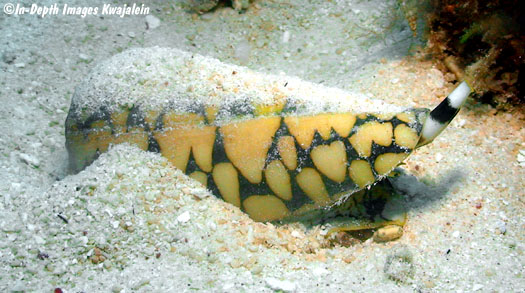
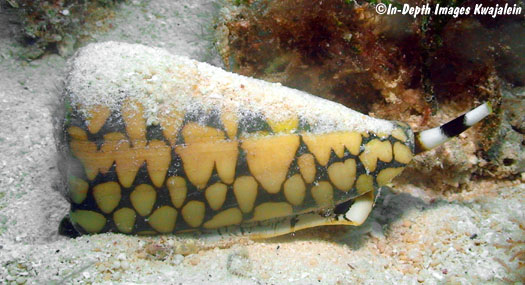
These are some of the specimens found in a lagoon Halimeda patch.
The shell of this species is black with large, pure, bright white triangular
markings. The light brown transparent periostracum makes the white look yellow.
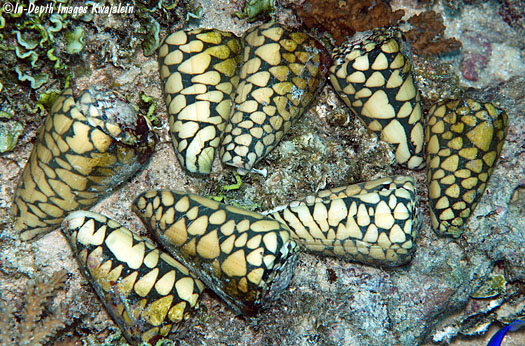
The cone below detected the presence of a nearby mole cowry, Cypraea talpa.
The cone first stretched out its siphon to smell it and see if it was acceptable
prey.
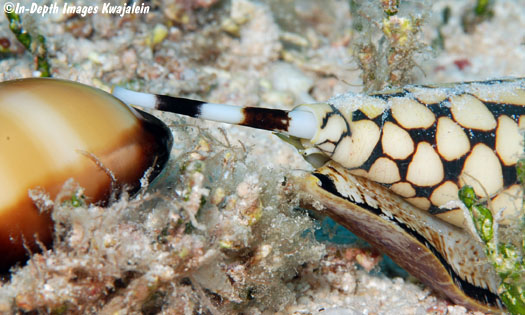
When the cone decided the cowry
would be edible, it extended a pale yellow tentacle from its mouth to deliver
the venomous harpoon into the cowry animal. Once the cowry was stunned, the
cone could then take its time eating it.
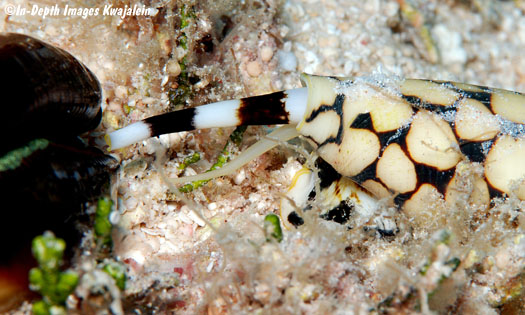
The Conus marmoreus below
emerged just enough from the sand to sting and consume the animal from a Conus
virgo.
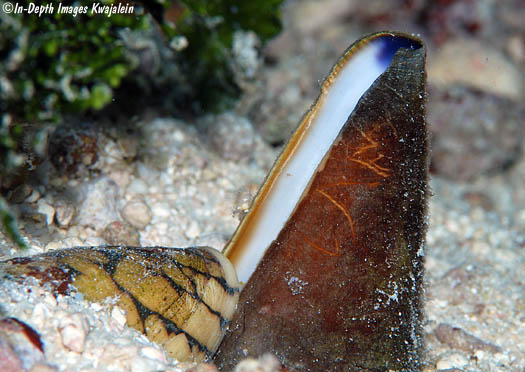
This one is eating a Conus
pulicarius.
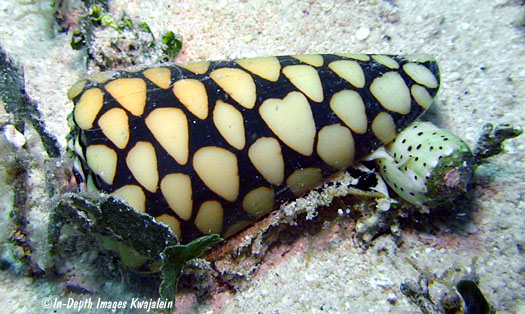
Even though this cone is on the
underside, it is the predator eating the animal out of the marlinspike auger,
Terebra maculata.
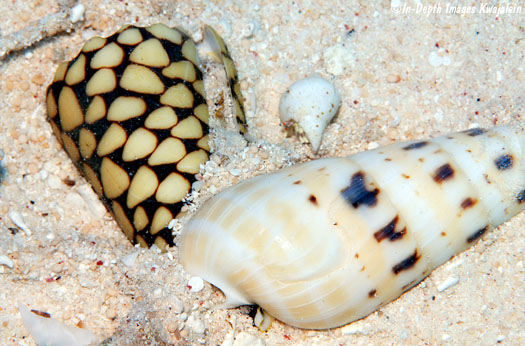
Conus marmoreus usually
attaches it egg capsules to the undersides of rocks, as below, or to clumps
of Halimeda algae. Each capsule contains numerous eggs. When
they hatch, they will drift with the plankton and grow a bit before settling
back down to the reef to become a normal cone shell.
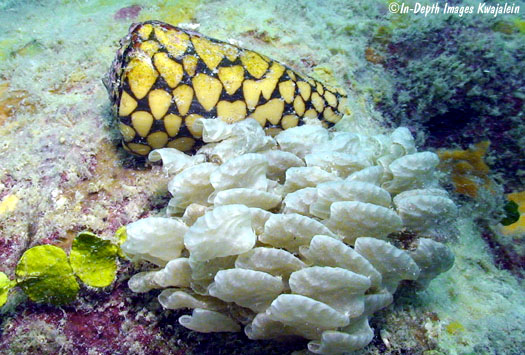
In the Halimeda patches,
Conus marmoreus usually lays its egg capsules attached to some of the
algae plants.
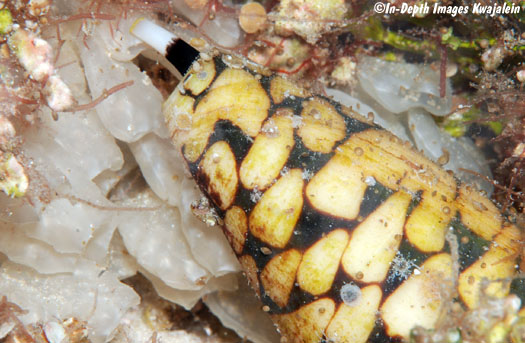
Here are a few more feeding records,
the first on Monoplex nicobaricus. Note the freeloading hermit crabs
waiting for free scraps in the photo immediately below.
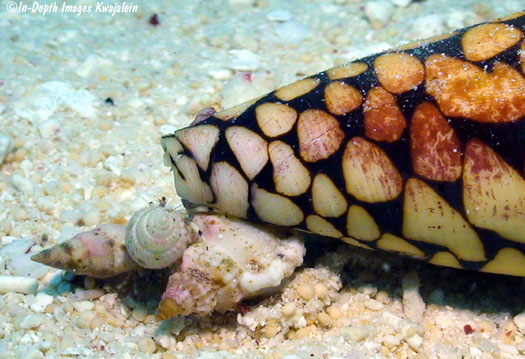
Here a cone eats Terebra subulata.
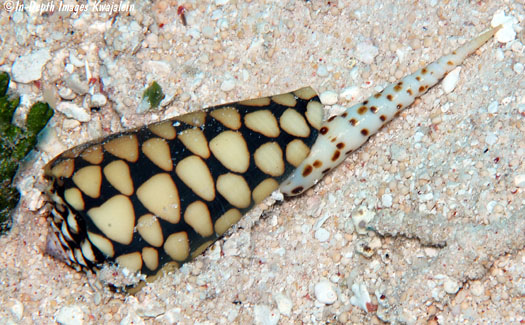
Below a cone eats Monoplex
nicobaricus.
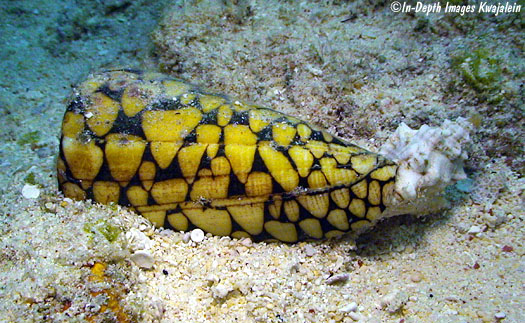
This one eats a juvenile cowry.
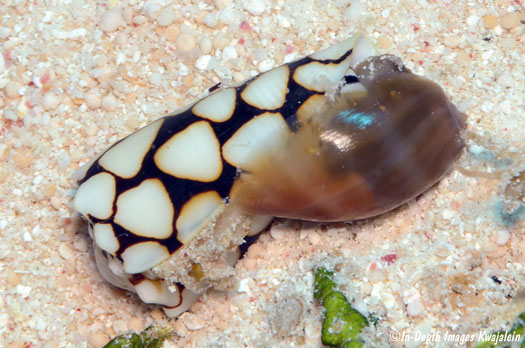
The cone below was crawling with
venomous stinger extended through a colony of Gibberulus
dekkersi looking for easy prey. The strombs, however, generally detected
the cone coming and would hop away.
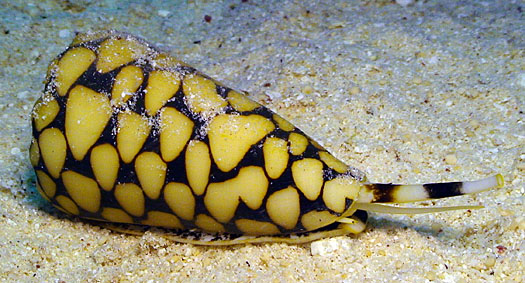
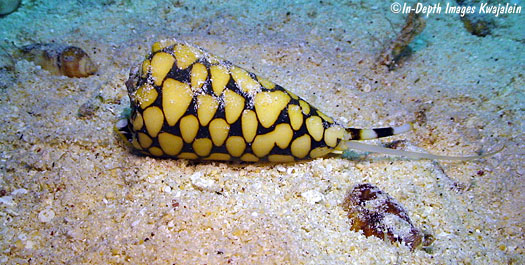
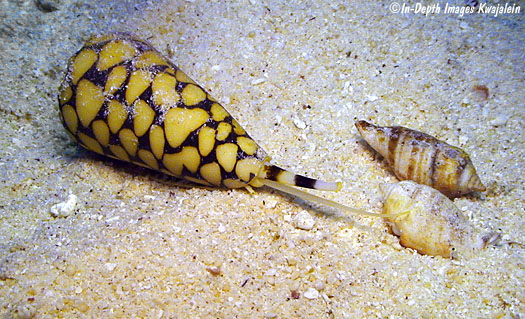
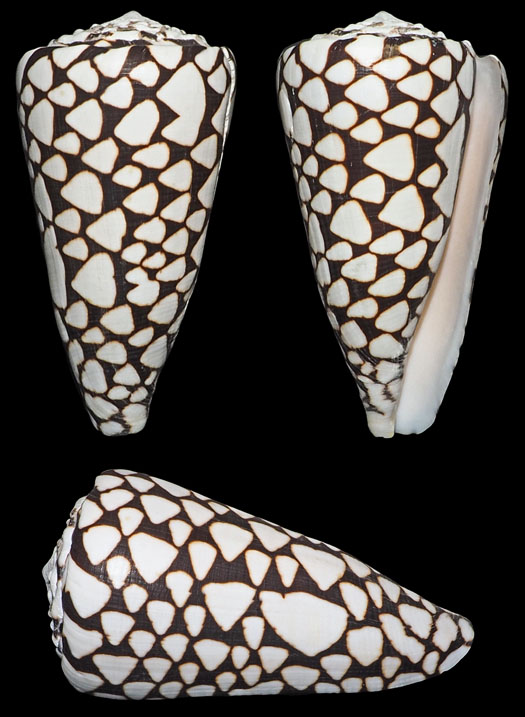
A tiny juvenile of Conus marmoreus
or possibly Conus bandanus.
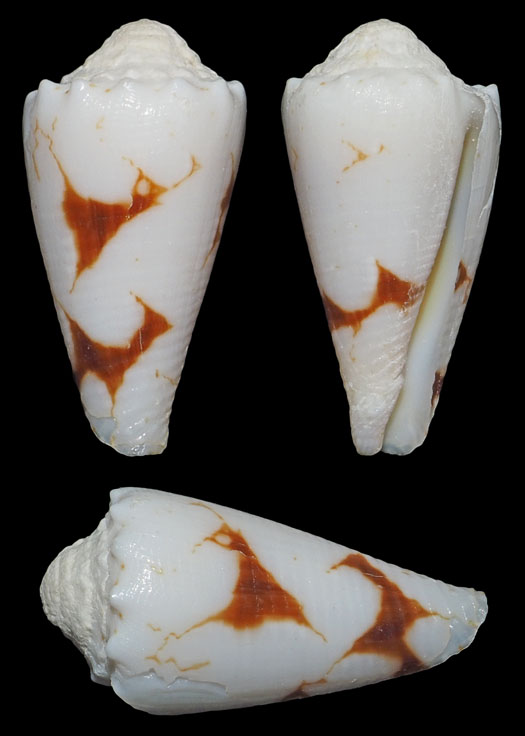
Created
4 July 2009
Updated 12 March 2020
Return to cones
Kwajalein Underwater home



















